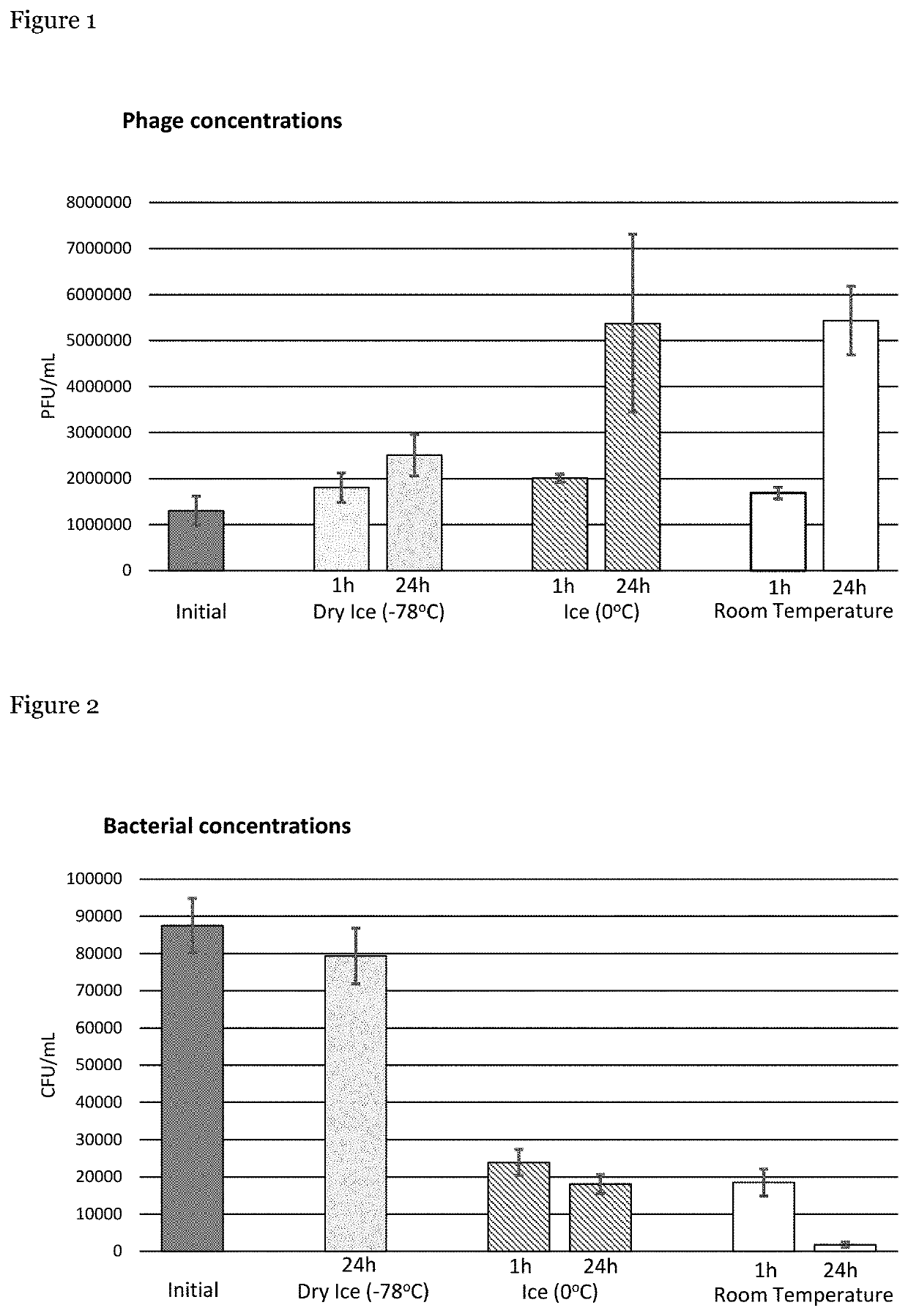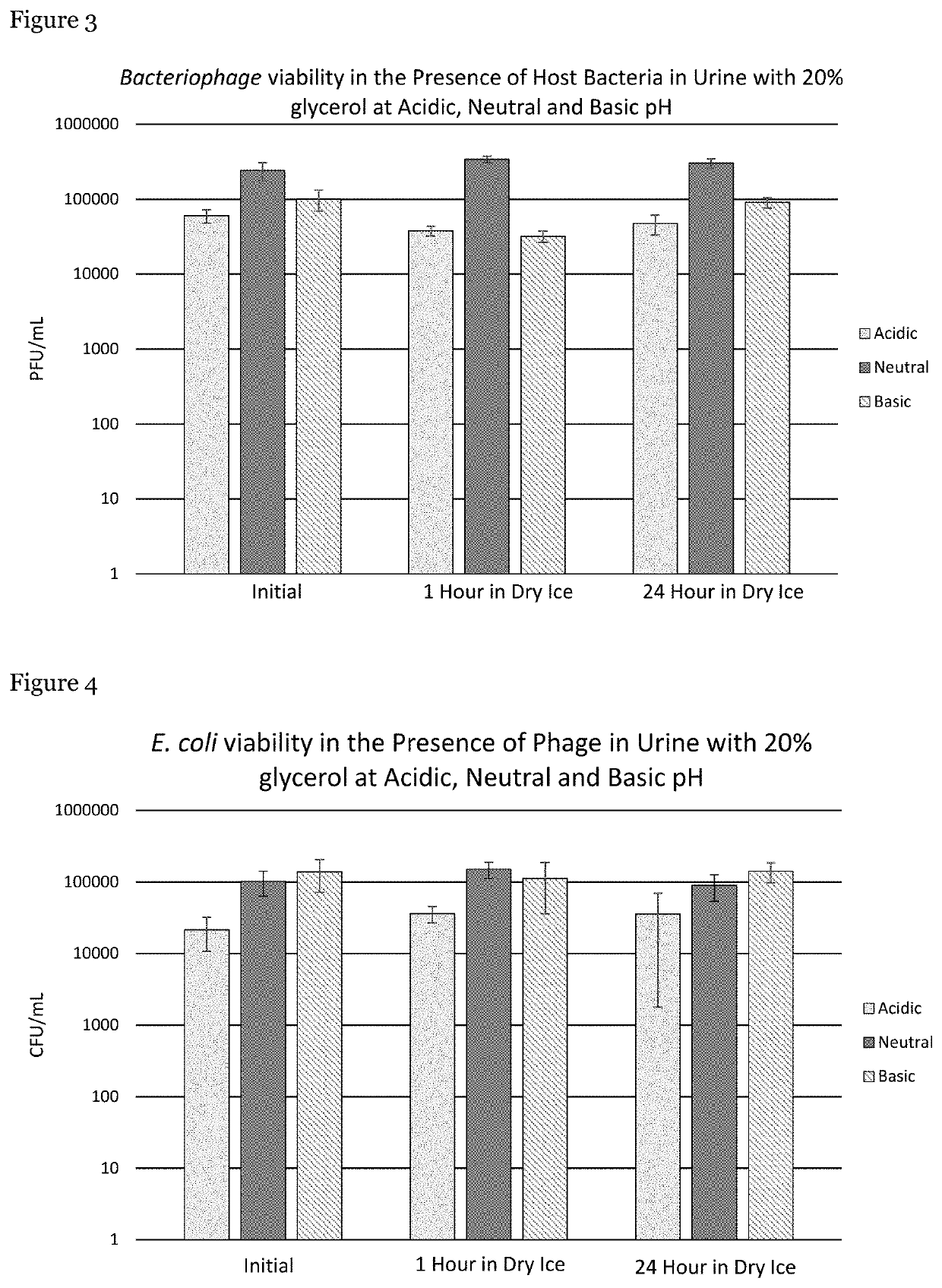Preservation of phage concentration in clinical samples
a phage and clinical sample technology, applied in the field of preservation of phage concentration in clinical samples, can solve the problems of ineffective clinical treatment of phage strains, significant changes in phage and bacterial content, and failure to fully stop phage replication, etc., to inhibit any damage to phages and reduce sample temperature
- Summary
- Abstract
- Description
- Claims
- Application Information
AI Technical Summary
Benefits of technology
Problems solved by technology
Method used
Image
Examples
example 1
hage Interaction with their Host Bacteria at Varying Temperatures
[0054]The interaction between phage and host cells in samples was investigated at varying temperatures, namely at room temperature (RT), 0° C. (ice) and −78° C. (dry ice).
[0055]Briefly, a 40 mL solution of phosphate buffered saline (PBS) containing 20% glycerol with ˜104 CFU / mL of Escherichia coli bacteria (EcoIII) and ˜106 PFU / mL of EcoIIIϕG phage respectively. One mL aliquots of this solution were placed into twenty-eight microtubes. These tubes were divided such that eight tubes were stored in ice, eight tubes were stored in dry ice and eight tubes were stored at RT. The remaining four tubes were used, immediately, to determine the initial concentrations of bacteria and phage present in the sample. Bacterial concentrations were determined by diluting each sample 1:10, 1:100 and 1:1000 in PBS, followed by plating on trypticase soy agar (TSA). Phage concentrations were determined by diluting each sample 1:10, 1:100, 1...
example 2
ion of Samples from Patients Treated with Therapeutic Bacteriophage
[0060]Experimentation was conducted to identify and develop a method to preserve clinical samples (particularly, urine specimens) from patients treated with therapeutic phage. Following the results obtained in Example 1, the method involved using low temperature (−78° C. (dry ice)) to inhibit the interaction of the phage with the patient's host bacteria present in samples until they can be quantitatively examined in a laboratory.
[0061]Urine was provided by male volunteers who were free of antibiotics. These volunteers were instructed to follow clean catch urine specimen collection procedures. To preserve bacterial cell viability and phage titers, glycerol was immediately added to each urine sample to provide a 20% v / v final concentration of glycerol. Urine specimens were examined using three different pHs.
[0062]E. coli (EcoIII) bacteria and EcoIIIϕG phage were added to each urine sample to achieve a final concentrati...
PUM
 Login to View More
Login to View More Abstract
Description
Claims
Application Information
 Login to View More
Login to View More - R&D
- Intellectual Property
- Life Sciences
- Materials
- Tech Scout
- Unparalleled Data Quality
- Higher Quality Content
- 60% Fewer Hallucinations
Browse by: Latest US Patents, China's latest patents, Technical Efficacy Thesaurus, Application Domain, Technology Topic, Popular Technical Reports.
© 2025 PatSnap. All rights reserved.Legal|Privacy policy|Modern Slavery Act Transparency Statement|Sitemap|About US| Contact US: help@patsnap.com


